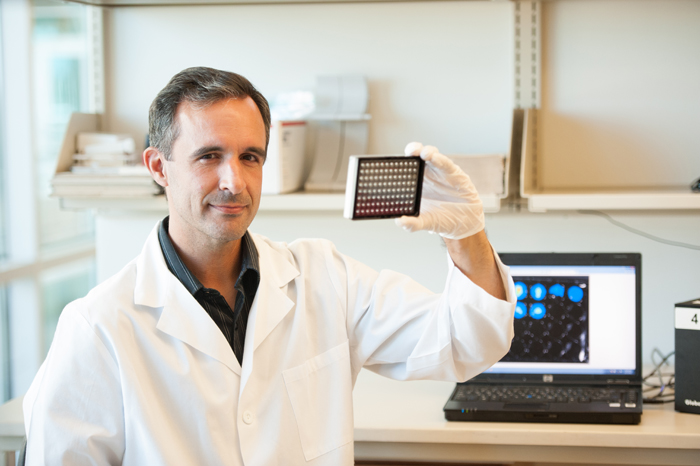TB or not TB: New test aims to have tuberculosis patients diagnosed in real time
For the past six years, Dr. Jeffery Cirillo and his team of researchers at the Texas A&M Health Science Center College of Medicine have been chasing a dream: To shorten the diagnosis timeline for tuberculosis (TB), one of the world’s deadliest diseases, from several weeks down to just a few hours. Now they are close to the finish line in the form of a new, rapid TB test that will enable healthcare providers to report results to potentially infected individuals while they wait.
The infectious disease, caused by various strains of mycobacteria, attacks the lungs or other organs and is spread through the air when an individual with an active TB infection coughs or sneezes. As much as one-third of the world’s population may be infected with TB and another one percent becomes infected every year. One in ten cases progress to the active disease, which presents well-known symptoms such as a chronic cough, coughing up bloody sputum (mucus), fever, night sweats and weight loss. If left untreated – a common scenario in developing countries lacking the infrastructure or resources to efficiently screen and follow up with infected patients – a person with active TB has only a 50 percent chance of survival.
With funding from the Bill and Melinda Gates Foundation and the Wellcome Trust, the team has discovered a new method to spot the bacteria that causes TB, a profound advance in point-of-care diagnosis of the disease.
“We’ve identified a fluorescence substrate that reacts with the bacteria,” Cirillo said. “This gives us a very sensitive signal that wouldn’t be possible otherwise.”
Once sputum samples are combined with the reactive substance, a battery-powered, handheld reader is then used to detect any fluorescence and deliver the diagnosis.
“There isn’t a diagnostic tool comparable to this in terms of allowing patients to rapidly determine whether or not they are infected,” Cirillo said.
While other TB tests exist, they take several days to produce results. Cirillo’s breakthrough involves using the new substrate to targeting a specific enzyme the bacteria produces as an indicator of the bacteria’s presence. It has not been previously possible to target a specific TB enzyme as a diagnostic for this disease.
The lab is working on developing alternative methods that would enable testing using urine or other types of human tissue, as well as taking a first look at additional bacteria that may be susceptible to this florescent reaction.
“We would like to apply it in all respiratory diseases,” Cirillo said. “The first applications in the next few years will be TB.”
The research team includes GBDbio, a Texas A&M spinout company, and Dr. Jianghong Rao at Stanford University. The project has letters of support from the World Health Organization, Doctors Without Borders and the Clinton Health Access Initiative. Cirillo is now seeking late-stage funding for the additional testing required to replicate his findings in independent labs, a crucial final step before production and distribution of the test kits can begin.
“We’ve done smaller scale testing in hundreds of samples,” Cirillo said. “To validate for worldwide use, it will require thousands of tests and validation in multiple labs outside our own.”
But with robust internal testing, publication in Nature: Chemistry last year, and manufacturing and distribution relationships already in place, the public health benefit of point-of-care TB diagnosis is tantalizingly close for the Texas A&M research team.
“In a project this ambitious, one of the main challenges is maintaining enough funding to keep us moving forward,” Cirillo said. “Right now, we’re at maybe an 18-month window for this device to be out serving patients.”
Media contact: media@tamu.edu



